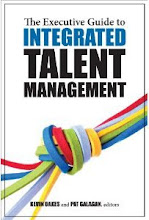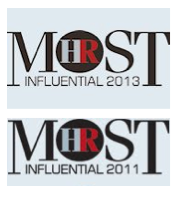I’ve posted previously on the CIPD’sattempt to restart moves to improve external reporting on people management,and potentially to try and include people on the balance sheet.
The attempt was launched at the CIPD
conference in November and was met with a largely critical response. My own challenges were that firstly
capitalising people on the balance sheet can’t and shouldn’t be done, and
secondly that nothing material had changed from previous failed attempts at
this, and I couldn’t see why this would result in anything different.
So I’m actually very pleased the attempt
has failed. I suggested issuing deathnotices on the RSA’s site for VyT a couple of weeks ago and this week HRMagazine declared that Vyt has scrapped its ambition to capitalise staff. It will now ‘focus instead on helping
organisations be more sustainable and maximise their workforce potential.’ Fine – who can argue against that?
By the way, HR Magazine also suggests that
VyT faced passionate criticism from practitioners with ethical concerns or
those who feel jaded based on similar attempts in the past. Now I’ll own up to passionate criticism and
I’m generally fairly passionate in most of what I do. And I do think the history of attempts to
improve external reporting are important to build upon. But I don’t think I’m jaded, and don’t see a
connection to ethical concerns. My
central objection has simply been about the capitalisation idea, and concern
about the potential of making firms do something which isn’t just ‘currently
difficult’ but is actually conceptually impossible. I think that’s a very valid and important
challenge to make!
My secondary objection was that the CIPD’s
framework (shown above) was too rigid and that prescribed standards would take companies away
from a strategic approach. This strikes
me as a valid and important concern as well.
And in fact, this challenge does also seem to have been taken on board:
“Although details have not been finalised, the framework will be modelled on an organisation’s value chain, a common approach in finance (see chart). This organises human capital data into ‘buckets’ across the four phases of a business model: inputs, activities, outputs and outcomes. An input could be retention; an activity might be recruitment; an output could be workforce capability; and an outcome might be productivity.”
So VyT may not quite be dead, but it’s
certainly been lobotomized and is now a much less dangerous beast. In fact we’re left with something smaller and
but broader which may actually be quite useful.
There are still a couple of important
changes before we end up with the right framework though. Take another look at the paragraph from HR
Magazine I’ve included above before I explain -
First, we have to realise that the value
chain isn’t just a common approach in finance – it’s a common approach in
business, including HR. VyT are talking
about exactly the same value chain as Kaplan and Norton in their strategy map. It’s just that we’ve repurposed it for our
own use. See this comparison from my
Strategic HCM book:
Secondly,
we should see the four parts of the value chain / strategy map as steps
not buckets. That’s why today, Kaplan
and Norton’s strategy map is the more popular tool than the balanced business
scorecard. The sense of flow between the
four perspectives is important as it’s this that provides the ability to
differentiate lead and lag indicators.
And it’s the linking of objectives and
measures between the steps in the strategy map which is important, so the
measures shouldn’t be predefined standards as this would detract from the
linking process, but should come from the strategy (and this isn’t just about
how to measure value but also refers to where metrics should be applied.)
Finally, we really do need to relabel VyT’s
outputs as outcomes and outcomes and business impacts, as in my diagram
above. The third step in the value
chain consists of outcomes not outputs firstly because these aren’t just
results but they really are something vital and important. And secondly, the fourth step isn’t just
outcomes resulting from outputs, but a completely new set of results based upon
a complex set of business processes as well as the outcomes which HR provides. Referring to people and cultural value like workforce capability as mere outputs rather than outcomes detracts rather than contributes to the way talent is valued.
If VyT makes these additional small changes
then it will end up with the HCM Value Chain I described in my 2005 book,
Strategic Human Capital Management: Creating Value through People.
Which I’m still convinced is the best
framework for measurement and reporting.
It's just a shame the CIPD didn’t come
straight to me about this. Two years agoI told the CIPD that Peter should be their CEO but they still shelled out for a
head hunter to ‘find’ him. Now Peter’s
paid out for Lancaster University to do completely unnecessary research when he could just have paid £25 for my book!
But at least it looks as if they’re going to
get the, or something close to the, right answer.
- Consulting - Research - Speaking - Training - Writing
- Strategy - Talent - Engagement - Change and OD
- Contact me to create more value for your business
- jon [dot] ingham [at] strategic [dash] hcm [dot] com
.
































0 comments:
Post a Comment
Please add your comment here (email me your comments if you have trouble and I will put them up for you)